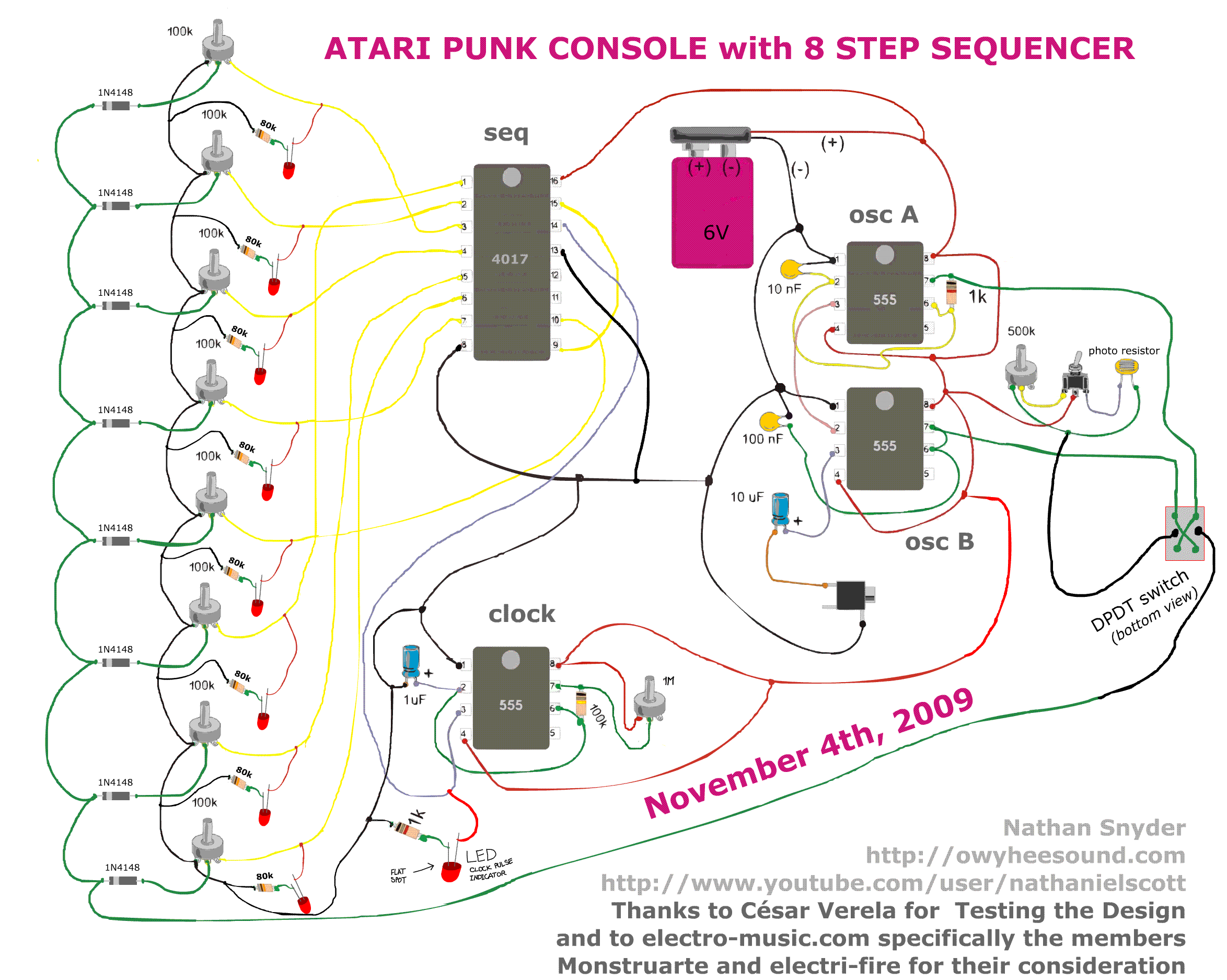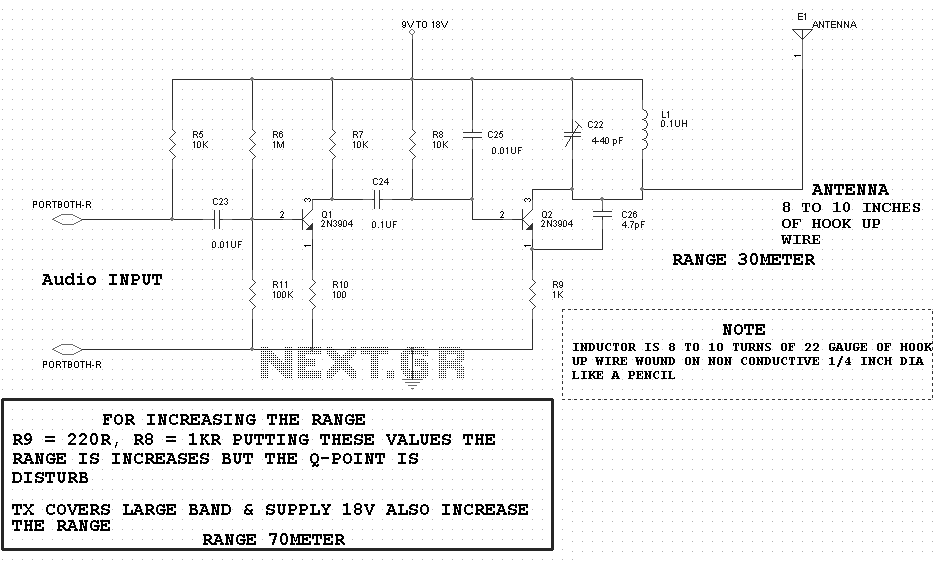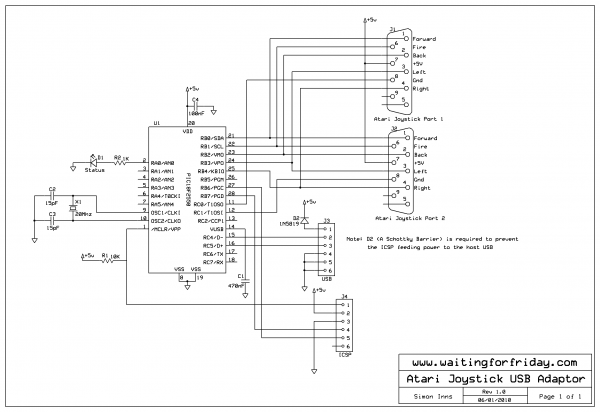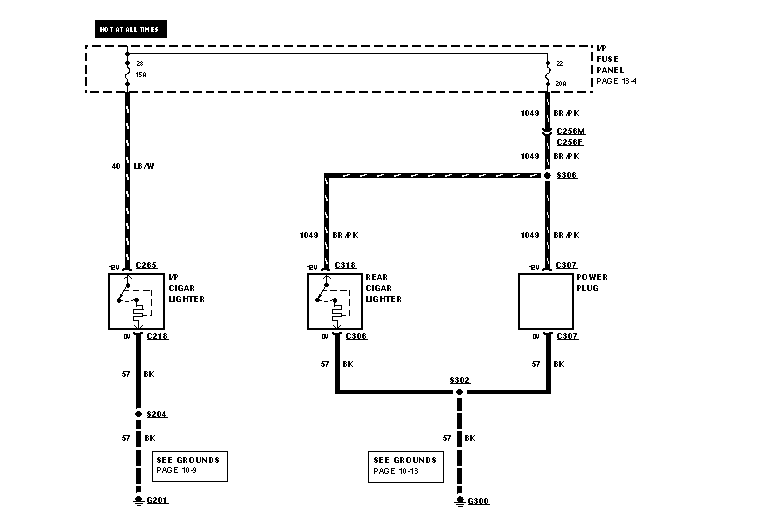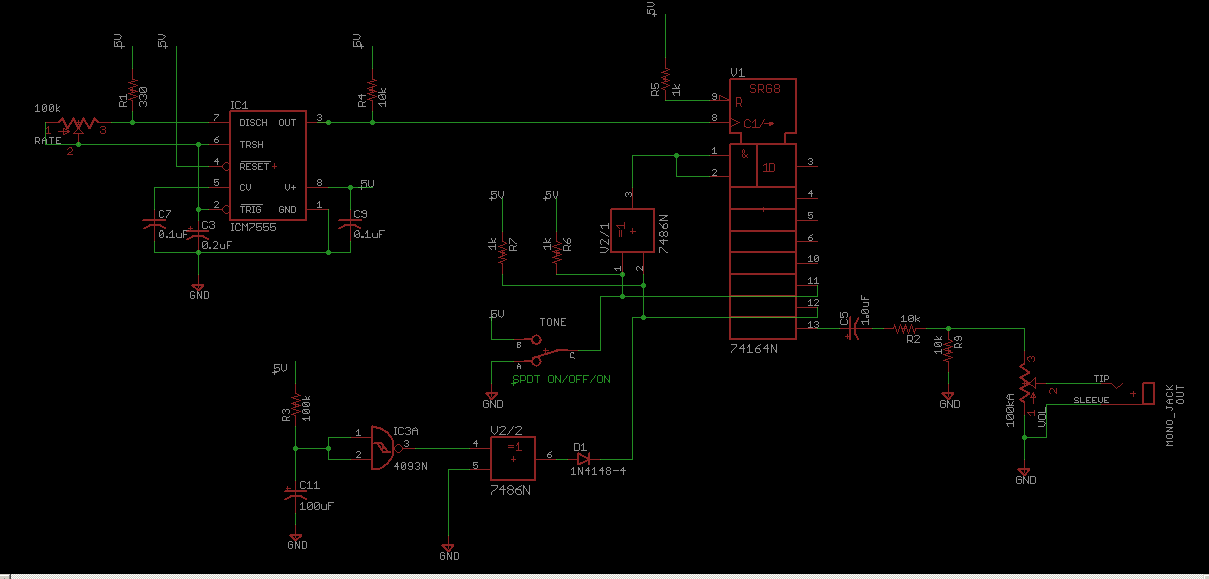
Atari Punk Junk Console
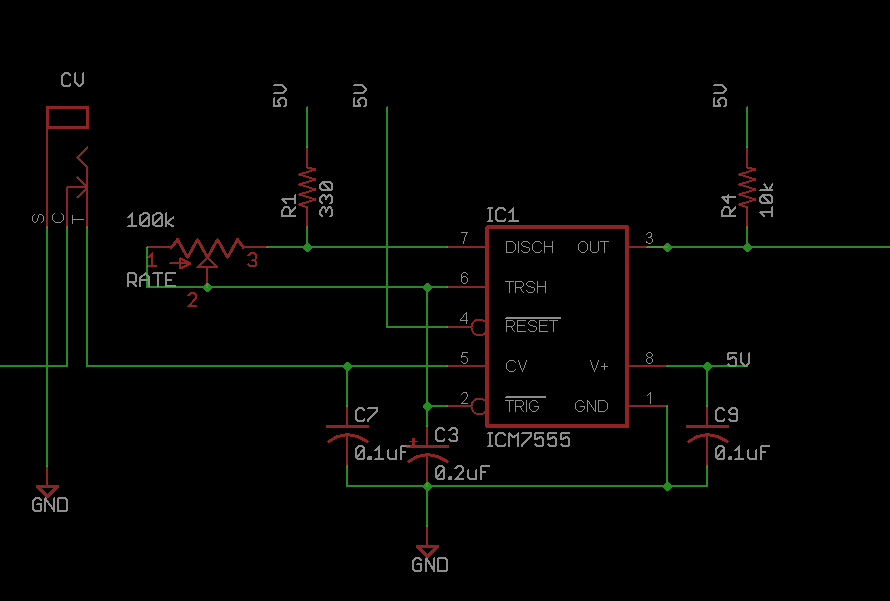
This circuit utilizes two fundamental oscillators that can be assembled as a DIY project, effectively modulating the primary Linear Feedback Shift Register (LFSR) circuit. It also produces interesting audio effects independently. The circuit serves as the main noise generator. The LFSR is a commonly used test circuit in electrical engineering. The power supply is designed to provide two distinct sources (battery and AC adapter), which are then regulated to deliver a stable, low-noise 5V output. A switch acts as the master on/off control for the circuit. When working with oscillators and AC adapters, it is essential to filter the power supply to prevent excess noise from interfering with sound quality, particularly during sampling or recording.
The circuit design incorporates two basic oscillators that generate audio signals, which are then used to modulate the output of the LFSR. The LFSR is a sequential circuit that produces pseudo-random binary sequences, making it suitable for applications such as noise generation and digital signal processing. The oscillators can be built using simple components such as resistors, capacitors, and transistors, allowing for easy assembly and modification.
The power supply section is critical in ensuring the stability and reliability of the circuit. It includes a voltage regulator that maintains a consistent 5V output, regardless of whether the circuit is powered by a battery or an AC adapter. This is achieved through the use of filtering capacitors that smooth out any voltage fluctuations and reduce noise. The inclusion of a master switch allows for convenient control over the entire circuit, enabling users to easily turn the system on or off as needed.
To further enhance performance, it is advisable to implement additional filtering techniques, such as using ferrite beads or inductors, to eliminate high-frequency noise that may arise from the power supply. This is particularly important in audio applications, where clarity and fidelity are paramount. Proper grounding practices should also be observed to minimize interference and maintain signal integrity throughout the circuit. Overall, this circuit design serves as a versatile platform for experimenting with sound modulation and noise generation in various electronic projects.Using two of the most basic oscillators you can DIY, this particular circuit works great to modulate our main LFSR circuit. It also sounds pretty cool on its own. The main noise generator for our circuit. The basic circuit at play here is a Linear Feedback Shift Register (LFSR), a test circuit widely used in electrical engineering.
The power supply is a standard way of offering two different power sources (battery and AC Adapter) and then regulating them to a nice, steady, low-noise 5V. The switch is the master on/off for the circuit. If you`re dealing with oscillators and AC Adapters, it behooves you to filter the power supply. You don`t want excess noise to interfere with your sounds, especially when sampling/recording! 🔗 External reference
The circuit design incorporates two basic oscillators that generate audio signals, which are then used to modulate the output of the LFSR. The LFSR is a sequential circuit that produces pseudo-random binary sequences, making it suitable for applications such as noise generation and digital signal processing. The oscillators can be built using simple components such as resistors, capacitors, and transistors, allowing for easy assembly and modification.
The power supply section is critical in ensuring the stability and reliability of the circuit. It includes a voltage regulator that maintains a consistent 5V output, regardless of whether the circuit is powered by a battery or an AC adapter. This is achieved through the use of filtering capacitors that smooth out any voltage fluctuations and reduce noise. The inclusion of a master switch allows for convenient control over the entire circuit, enabling users to easily turn the system on or off as needed.
To further enhance performance, it is advisable to implement additional filtering techniques, such as using ferrite beads or inductors, to eliminate high-frequency noise that may arise from the power supply. This is particularly important in audio applications, where clarity and fidelity are paramount. Proper grounding practices should also be observed to minimize interference and maintain signal integrity throughout the circuit. Overall, this circuit design serves as a versatile platform for experimenting with sound modulation and noise generation in various electronic projects.Using two of the most basic oscillators you can DIY, this particular circuit works great to modulate our main LFSR circuit. It also sounds pretty cool on its own. The main noise generator for our circuit. The basic circuit at play here is a Linear Feedback Shift Register (LFSR), a test circuit widely used in electrical engineering.
The power supply is a standard way of offering two different power sources (battery and AC Adapter) and then regulating them to a nice, steady, low-noise 5V. The switch is the master on/off for the circuit. If you`re dealing with oscillators and AC Adapters, it behooves you to filter the power supply. You don`t want excess noise to interfere with your sounds, especially when sampling/recording! 🔗 External reference

